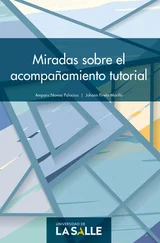Oskar Andreasson - Iptables Tutorial 1.2.2
Здесь есть возможность читать онлайн «Oskar Andreasson - Iptables Tutorial 1.2.2» весь текст электронной книги совершенно бесплатно (целиком полную версию без сокращений). В некоторых случаях можно слушать аудио, скачать через торрент в формате fb2 и присутствует краткое содержание. Жанр: Интернет, на русском языке. Описание произведения, (предисловие) а так же отзывы посетителей доступны на портале библиотеки ЛибКат.
- Название:Iptables Tutorial 1.2.2
- Автор:
- Жанр:
- Год:неизвестен
- ISBN:нет данных
- Рейтинг книги:4 / 5. Голосов: 1
-
Избранное:Добавить в избранное
- Отзывы:
-
Ваша оценка:
- 80
- 1
- 2
- 3
- 4
- 5
Iptables Tutorial 1.2.2: краткое содержание, описание и аннотация
Предлагаем к чтению аннотацию, описание, краткое содержание или предисловие (зависит от того, что написал сам автор книги «Iptables Tutorial 1.2.2»). Если вы не нашли необходимую информацию о книге — напишите в комментариях, мы постараемся отыскать её.
Iptables Tutorial 1.2.2 — читать онлайн бесплатно полную книгу (весь текст) целиком
Ниже представлен текст книги, разбитый по страницам. Система сохранения места последней прочитанной страницы, позволяет с удобством читать онлайн бесплатно книгу «Iptables Tutorial 1.2.2», без необходимости каждый раз заново искать на чём Вы остановились. Поставьте закладку, и сможете в любой момент перейти на страницу, на которой закончили чтение.
Интервал:
Закладка:
The bad_tcp_packets chain
The bad_tcp_packets chain is devoted to contain rules that inspect incoming packets for malformed headers or other problems. As it is, we have only chosen to include a packet filter which blocks all incoming TCP packets that are considered as NEW but do not have the SYN bit set, as well as a rule that blocks SYN/ACK packets that are considered NEW. This chain could be used to check for all possible inconsistencies, such as above or XMAS port-scans etc. We could also add rules that looks for state INVALID.
If you want to fully understand the NEW not SYN, you need to look at the State NEW packets but no SYN bit set section in the Common problems and questions appendix regarding state NEW and non-SYN packets getting through other rules. These packets could be allowed under certain circumstances but in 99% of the cases we wouldn't want these packets to get through. Hence, we log them to our logs and then we DROP them.
The reason that we REJECT SYN/ACK packets that are considered NEW is also very simple. It is described in more depth in the SYN/ACK and NEW packets section in the Common problems and questions appendix. Basically, we do this out of courtesy to other hosts, since we will prevent them from being attacked in a sequence number prediction attack.
The allowed chain
If a packet comes in on $INET_IFACE and is of TCP type, it travels through the tcp_packets chain and if the connection is against a port that we want to allow traffic on, we want to do some final checks on it to see if we actually do want to allow it or not. All of these final checks are done within the allowed chain.
First of all, we check if the packet is a SYN packet. If it is a SYN packet, it is most likely to be the first packet in a new connection so, of course, we allow this. Then we check if the packet comes from an ESTABLISHED or RELATED connection, if it does, then we, again of course, allow it. An ESTABLISHED connection is a connection that has seen traffic in both directions, and since we have seen a SYN packet, the connection then must be in state ESTABLISHED, according to the state machine. The last rule in this chain will DROP everything else. In this case this pretty much means everything that has not seen traffic in both directions, i.e., we didn't reply to the SYN packet, or they are trying to start the connection with a non SYN packet. There is no practical use of not starting a connection with a SYN packet, except to port scan people pretty much. There is no currently available TCP/IP implementation that supports opening a TCP connection with something else than a SYN packet to my knowledge, hence, DROP it since it is 99% sure to be a port scan.
NoteThe rule regarding ESTABLISHED,RELATED packets is actually redundant in this script and will not be used, but has been included for the sake of being complete. The rule that will be used is placed at the top of the INPUT chain, and contains ESTABLISHED,RELATED as well.
The TCP chain
The tcp_packets chain specifies what ports are allowed to use on the firewall from the Internet. There is, however, even more checks to do, hence we send each and every one of the packets on to the allowed chain, which we described previously.
-A tcp_packets tells iptables in which chain to add the new rule, the rule will be added to the end of the chain. -p TCP tells it to match TCP packets and -s 0/0 matches all source addresses from 0.0.0.0 with netmask 0.0.0.0, in other words all source addresses. This is actually the default behavior but I am using it just to make everything as clear as possible. --dport 21 means destination port 21, in other words if the packet is destined for port 21 they also match. If all the criteria are matched, then the packet will be targeted for the allowed chain. If it doesn't match any of the rules, they will be passed back to the original chain that sent the packet to the tcp_packets chain.
As it is now, I allow TCP port 21, or FTP control port, which is used to control FTP connections and later on I also allow all RELATED connections, and that way we allow PASSIVE and ACTIVE connections since the ip_conntrack_ftp module is, hopefully, loaded. If we do not want to allow FTP at all, we can unload the ip_conntrack_ftp module and delete the $IPTABLES -A tcp_packets -p TCP -s 0/0 --dport 21 -j allowed line from the rc.firewall.txt file.
Port 22 is SSH, which is much better than allowing telnet on port 23 if you want to allow anyone from the outside to use a shell on your box at all. Note that you are dealing with a firewall. It is always a bad idea to give others than yourself any kind of access to a firewall box. Firewalls should always be kept to a bare minimum and no more.
Port 80 is HTTP, in other words your web server, delete it if you do not want to run a web server directly on your firewall.
And finally we allow port 113, which is IDENTD and might be necessary for some protocols like IRC, etc to work properly. Do note that it may be worth it to use the oidentd package if you NAT several hosts on your local network. oidentd has support for relaying IDENTD requests on to the correct boxes within your local network.
If you feel like adding more open ports with this script, well, it should be quite obvious how to do that by now. Just cut and paste one of the other lines in the tcp_packets chain and change it to the port you want to open.
The UDP chain
If we do get a UDP packet on the INPUT chain, we send them on to udp_packets where we once again do a match for the UDP protocol with -p UDP and then match everything with a source address of 0.0.0.0 and netmask 0.0.0.0, in other words everything again. Except this time, we only accept specific UDP ports that we want to be open for hosts on the Internet. Do note that we do not need to open up holes depending on the sending hosts source port, since this should be taken care of by the state machine. We only need to open up ports on our host if we are to run a server on any UDP port, such as DNS etc. Packets that are entering the firewall and that are part of an already established connection (by our local network) will automatically be accepted back in by the --state ESTABLISHED,RELATED rules at the top of the INPUT chain.
As it is, we do not ACCEPT incoming UDP packets from port 53, which is what we use to do DNS lookups. The rule is there, but it is per default commented out. If you want your firewall to act as a DNS server, uncomment this line.
I personally also allow port 123, which is NTP or network time protocol. This protocol is used to set your computer clock to the same time as certain other time servers which have very accurate clocks. Most of you probably do not use this protocol and hence I am not allowing it per default. The same thing applies here, however, the rule is there and it is simple to uncomment to get it working.
We do not currently allow port 2074, which is used for certain real-time multimedia applications like speak freely which you can use to talk to other people in real-time by using speakers and a microphone, or even better, a headset. If you would like to use this, you could turn it on quite simply by removing the comment.
Port 4000 is the ICQ protocol. This should be an extremely well known protocol that is used by the Mirabilis application named ICQ. There are at least 2-3 different ICQ clones for Linux and it is one of the most widely used chat programs in the world. I doubt there is any further need to explain what it is.
At this point, two extra rules are available if you are experiencing a lot of log entries due to different circumstances. The first rule will block broadcast packets to destination ports 135 through 139. These are used by NetBIOS, or SMB for most Microsoft users. This will block all log entries we may get from iptables logging Microsoft network activity on the outside of our firewall. The second rule was also created to take care of excessive logging problems, but instead takes care of DHCP queries from the outside. This is specifically true if your outside network consists of a non-switched Ethernet type of network, where the clients receive their IP addresses by DHCP. During these circumstances, you could wind up with a lot of logs from just that.
Читать дальшеИнтервал:
Закладка:
Похожие книги на «Iptables Tutorial 1.2.2»
Представляем Вашему вниманию похожие книги на «Iptables Tutorial 1.2.2» списком для выбора. Мы отобрали схожую по названию и смыслу литературу в надежде предоставить читателям больше вариантов отыскать новые, интересные, ещё непрочитанные произведения.
Обсуждение, отзывы о книге «Iptables Tutorial 1.2.2» и просто собственные мнения читателей. Оставьте ваши комментарии, напишите, что Вы думаете о произведении, его смысле или главных героях. Укажите что конкретно понравилось, а что нет, и почему Вы так считаете.








